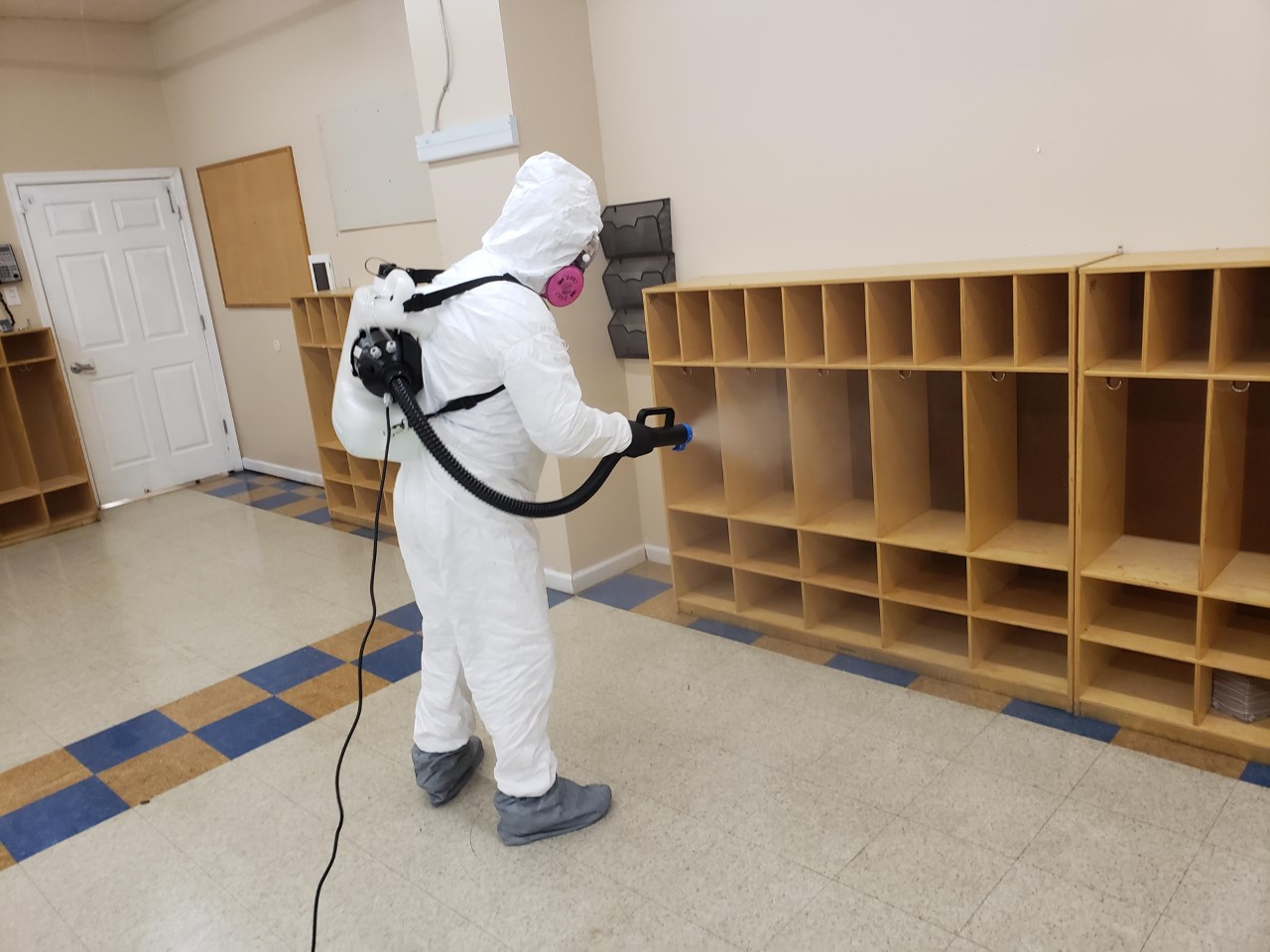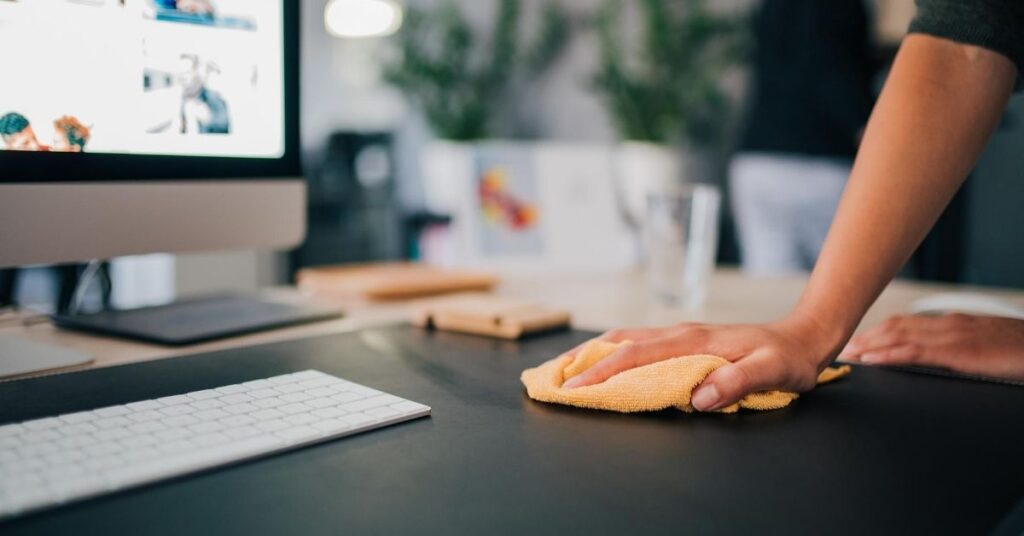The virus that causes COVID-19 is mainly spread by respiratory droplets. When someone infected with COVID-19 coughs or sneezes, respiratory droplets that contain the virus are expelled and can be breathed in by someone nearby. Although the virus cannot enter the body through the skin, the respiratory droplets carrying the virus can get into your airways or mucous membranes of your eyes, nose, or mouth to infect you. The virus can also be spread if you touch a surface contaminated with virus and then touch your eyes, nose or mouth, although this is not the primary way the virus spreads.
Routine cleaning and disinfecting is key to maintaining a safe environment for faculty, students, and staff.
- Cleaning removes dirt and most germs and is usually done with soap and water.
- Disinfecting kills most germs, depending on the type of chemical, and only when the chemical product is used as directed on the label.
Routine cleaning and disinfecting
Clean and disinfect surfaces and objects that are touched a lot at least daily. Clean more often if they are touched a lot by different people. Items may include:
- Door knobs and handles
- Stair rails
- Classroom desks and chairs
- Lunchroom tables and chairs
- Countertops
- Handrails
- Light switches
- Push buttons on vending machines and elevators
- Shared remote controls
- Shared telephones
- Shared desktops
- Shared computer keyboards and mice
Note: Computer keyboards are hard to clean. Put signs at shared computers that teach proper hand hygiene for before and after people use them. This may lower the chance of spreading disease. To help with cleaning, consider using covers that protect the keys but still make it possible to use the keys.
It is not necessary to always use disinfectants when cleaning surfaces that are not touched a lot, such as floors, bookcases, tops of filing cabinets, etc. Soft surfaces, such as carpets, rugs, and drapes can be cleaned on a regular schedule, using soap and water or a cleaner appropriate for the material.
If you have soft surfaces that need cleaning, remove any body fluids or other contamination that you can see. Then use a cleaner that is right for the type of surface being cleaned. After cleaning:
- Wash/launder items as appropriate, using the manufacturer’s instructions. If possible, use the warmest water setting possible for the items and dry items completely.
- Otherwise, use products that are approved by the EPA for use against the virus that causes COVID-19 and that are suitable for porous surfaces.
Always take safety measures when cleaning or coming in contact with surfaces which may have been infected with Covid-19 and/or any other bacteria. PPE should be worn, and referring to the CDC recommended cleaning agents will help ensure a safe workplace.


